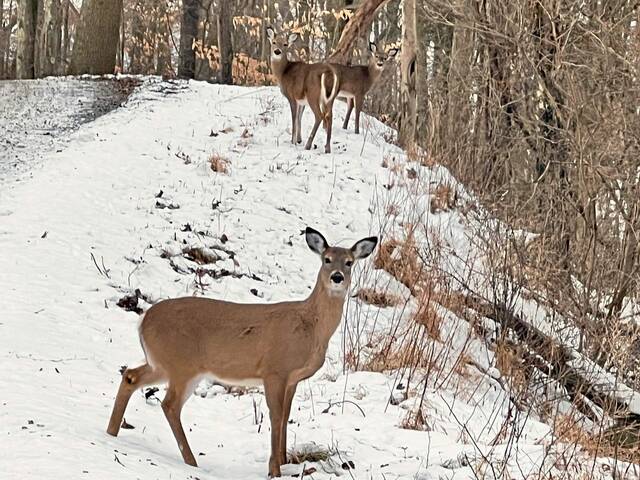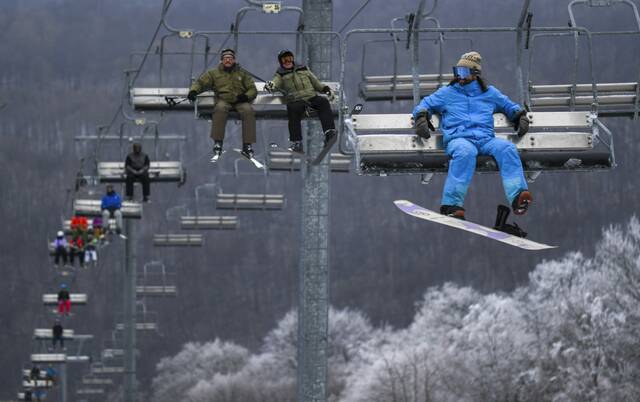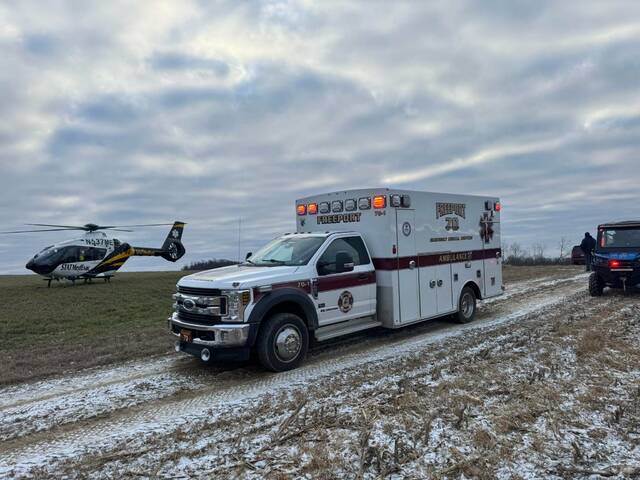The Pennsylvania Game Commission reports that turkey reproduction was well above average this past summer, translating to above average fall flock sizes that are worth pursuing.
Pennsylvania’s fall turkey season kicks off Saturday in 19 of Pennsylvania’s 23 Wildlife Management Units (WMUs) — and there’s reason for hunters to be excited.
Hunters should take note the 2021 fall turkey season is shorter in 14 WMUs. There is no fall season in WMUs 5A, 5C or 5D. Shotguns, archery tackle, or muzzle-loading firearms are the only lawful implements that may be used. Centerfire and rimfire rifles are no longer permitted for fall turkey hunting.
Where fall turkey seasons are held, season lengths vary by WMU. Hunters are advised the three-day Thanksgiving season will be held only in four WMUs this year, WMUs 2B, 2C, 2D and 2E, and, like last year, the season will run the Wednesday before Thanksgiving, Thanksgiving Day and the Friday after Thanksgiving.
Fall turkey season lengths are as follows:
WMUs 1A, 1B, 4A, 4B, 4D and 4E — Oct. 30-Nov. 6
WMU 2B (Shotgun and bow and arrow only) — Oct. 30-Nov. 19 and Nov. 24-26
WMUs 2C, 2D and 2E — Oct. 30-Nov. 13 and Nov. 24-26
WMUs 2A, 2F, 2G, 2H, 3A, 3B, 3C, 3D and 4C — Oct. 30-Nov. 13
WMU 5B — Nov. 2-4.
While fall turkey hunters no longer are required to wear fluorescent orange, the Game Commission highly recommends the use of orange when not required, especially while moving.
Fall turkey hunting
Statewide in recent years, Pennsylvania fall harvests have been declining due to shorter seasons, fewer hunters, smaller fall flocks and varying mast crops. Last fall, the turkey harvest was estimated at 8,500, which was 8% less than the 2019 estimate of 9,000.
Meanwhile, the number of fall turkey hunters increased to an estimated 100,100 in 2020, up from an estimated 95,800.
Fall turkey hunter success in 2020 was 8.4%, similar to the previous three-year average of 8.7% and a slight decrease from the previous 10-year average of 9.3%.
Season outlook
Field reports of oak mast production vary greatly across the state, ranging from acorn scarcity in some areas, average crops in others, and bumper crops in many places. Find the acorns and you’ll likely find turkeys.
In areas where acorns are scarce, hunters are encouraged to cover a lot of ground to find flocks that likely will concentrate around available food sources. In areas where mast is abundant, hunters are encouraged to scout to determine turkey movement patterns, as turkey flocks will wander more where food is abundant.
Currently turkey densities are below management goal in 15 of 23 WMUs. This trend has been observed across much of the species’ range besides Pennsylvania.
It is believed the Brood X cicada hatch in most of southern Pennsylvania, coupled with relatively warm and dry late spring weather across most of the state, resulted in average to above average poult survival this past summer in 19 of the 23 WMUs. The 12 WMUs with above average recruitment are projected to hold larger than average flocks this fall. There are fall turkey seasons in nine of these WMUs (WMUs 1B, 2A, 2C, 2G, 2H, 3D, 4A, 4B, and 4D).
The above average recruitment in most areas, in combination with continued habitat management and lower fall harvests, are in line with the management goal of assisting the population to increase.
Harvests and reporting
Successful fall turkey hunters must tag their birds according to instructions provided on the printed harvest tags supplied with their licenses, then report harvests.
Mentored hunters under the age of 7 may receive by transfer a fall turkey tag supplied by their mentor.
The turkey must be tagged immediately after harvest and before the turkey is moved, and the tag must be securely attached to a leg until the bird is prepared for consumption or mounting.
Within 10 days of harvest (five days for mentored hunters), turkey hunters must report harvests to the Game Commission, either by going online at HuntFishPA, or the Game Commission’s website, www.pgc.pa.gov, calling toll-free or mailing in a prepaid post card.
Hunters reporting their turkey harvests over the telephone can call 1-800-838-4431. Hunters will need to have their license and their copy of the harvest tag in front of them when they make the call.
All hunters reporting harvests are asked to identify the WMU, county and township where the bird was taken.
Additionally, hunters may harvest a turkey that has been leg-banded for research purposes, and if so, they also should follow the instructions on the band. The Game Commission leg-banded 479 turkeys last winter in a continuing effort to determine spring harvest rates and annual survival rates by WMU, tracking turkey populations.








